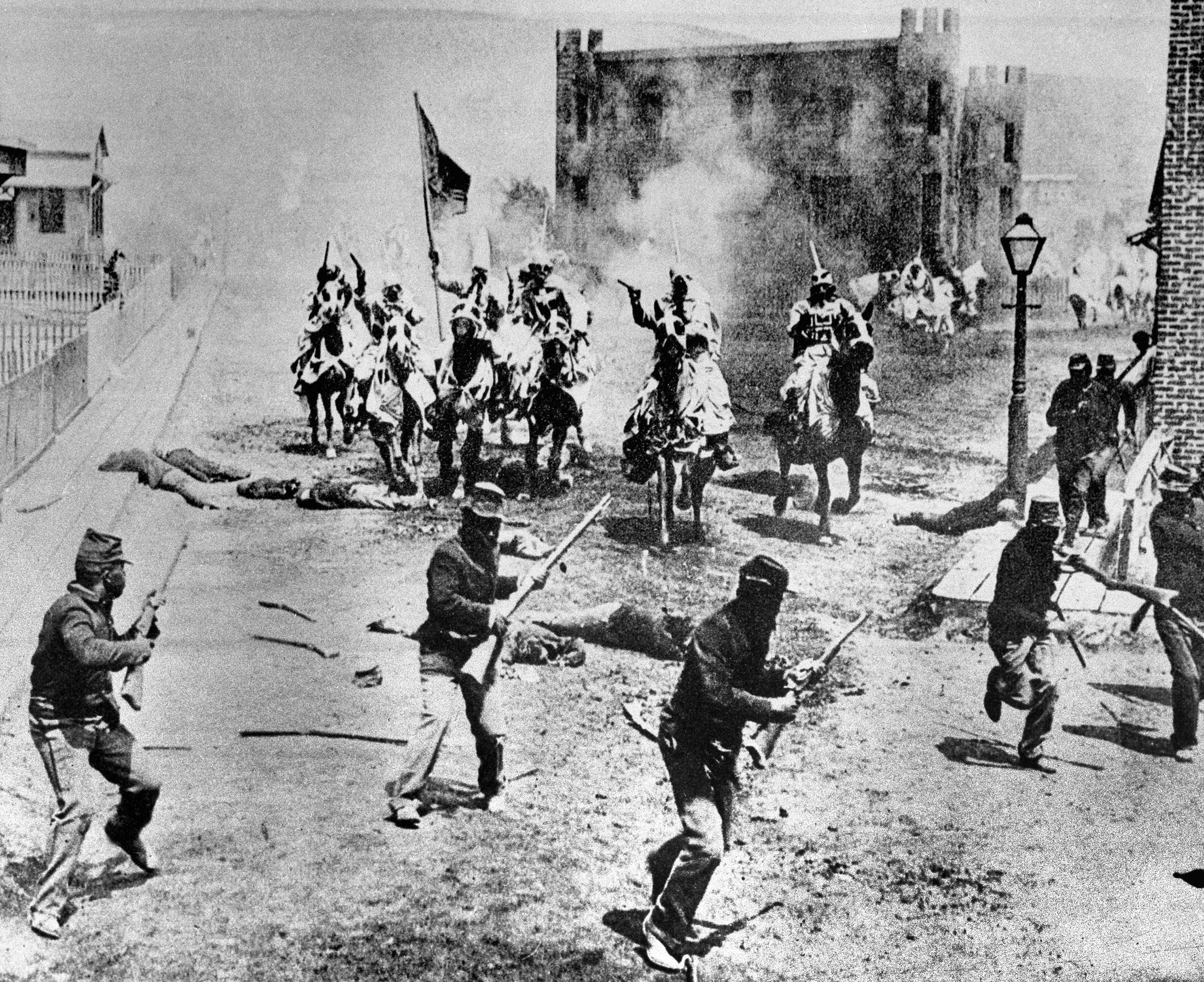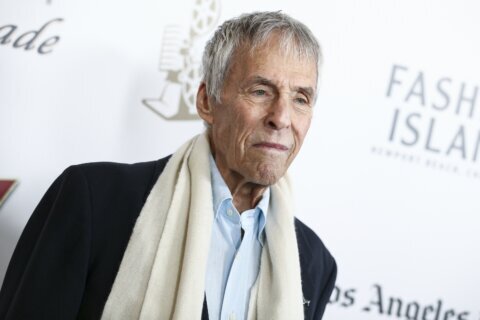WASHINGTON — For more than a decade, DJ Spooky (Paul Miller) has been cutting and remixing not only music but visual arts, film, technology and culture.
“DJing is the art of remixing,” Miller told WTOP. “You’re always taking found fragments of material.”
His work has taken the D.C. native from New York’s Metropolitan Museum of Art to the Whitney and Vienna Biennials. He’s collaborated with Yoko Ono, Sonic Youth’s Thurston Moore, Lee “Scratch” Perry and Chuck D. He’s penned books on his aesthetic and the environment. He’s also executive-produced a five-disc collection of early films written, produced and directed by African-Americans.
On Tuesday at the Kennedy Center, he’ll present one of his early multimedia pieces — “Rebirth of a Nation,” a reworking and re-imagining of D.W. Griffith’s silent epic “The Birth of a Nation” (1915), widely considered the first masterpiece of American filmmaking — despite its frankly racist content.
In DJ Spooky’s show, he cuts and mixes pieces of the film with pieces of recorded and live music. On Tuesday in particular, it’ll be played by the string quartet Sound Impact, deconstructing the visual language of the film while reinterpreting — and letting the audience reinterpret — whatever results.
DJ Spooky puts together the sights and sounds in similar but different ways each time he performs it.
“I have a formula that I can use to create permutations,” he said. “‘OK, at this point in the film I need to make sure that [these] images have already been sequenced, and these sounds have already been played.’ And then there are all sorts of layers that can go into that.”
Like Griffith’s film, Spooky’s original piece was about three hours. He’s since cut it down to an hour.
“I’ve switched scenes around; I’ve changed the ways the characters interact with one another. I think of the film as Lego blocks. I can make it into a castle; I can go in many different directions,” he said.
Since the release of “The Birth of a Nation” in 1915, Spooky said, “We’ve seen 100 years-plus of the evolution of how people think of cinema and realism.” He also called it the first movie to “set the tone for how we ‘realistically’ portray how cinema would affect political aesthetics.”
“To me, the film really has a deep history with the evolution of media,” Spooky said. “Nowadays, of course, in the era of fake news, and [the] deeply problematic grip of reality that our media landscape seems to have, I think we can easily see that this still goes back to the DNA of things.”
He added that DJing, or the DJ aesthetic, has extended beyond the world of music.
“As the electric guitar changed rock ‘n’ roll, the turntable changed the way we think about media,” he said, claiming as much influence by Marcel Duchamp as Grandmaster Flash. “DJing has democratized the world of sound as we know it. So all that I’m doing is taking a DJ mix and applying it to cinema.”
Spooky added that the aesthetic of juxtaposition — of “the cut,” as he wrote in his book, “Rhythm Science” (2004) — is a modern contribution to the artistic lexicon, made possible by technology.
“The remix concept applies to all aspects of contemporary reality itself,” Spooky said of today’s media environment where anyone can start a YouTube channel. “Everything is connected, and if you have an advance in technology, you’ll have an advance in how people respond to media.”
That contains dangers: Looking at the most recent election campaign provided a sobering example.
“I have to admit, I didn’t realize … that people had such low media literacy,” he said. “We can’t read between lines; we don’t think of how edits affect the truth of something. You could put Michael Jackson break-dancing on the moon with a Fox News logo, and people would think it was real.”
“The eerie thing is: How far do we go down the rabbit hole here?” he asked. “Nothing is a fixed format. Everything can be essentially transformative and looking at every possible angle. And I think that’s a healthy and good thing — we just have to be very careful with how we think about art and culture.”
It’s a power that can be used for good or ill.
“The good news is that everything can be changed,” Spooky said. “But the problem with the 20th versus 21st century is that people are looking for this idea of certainty, and it’s just not happening. So to me, at least the beauty of our time is that we’ve now given up any sense of being locked into one narrative, which could be good or bad, but for what it’s worth, it’s incredibly important.”
When the subject turned to his favorite venues, he admitted that The Acropolis was “pretty hard to top,” but that the Kennedy Center holds special meaning to him having grown up near Dupont Circle.
“The Kennedy Center has a legendary status,” he said. “I’m really honored to be able to present this. Imagine if you’re a kid and there’s this amazing temple near your house. That’s what this is for me.”
Click here for more information. Listen below for the full conversation with DJ Spooky:








